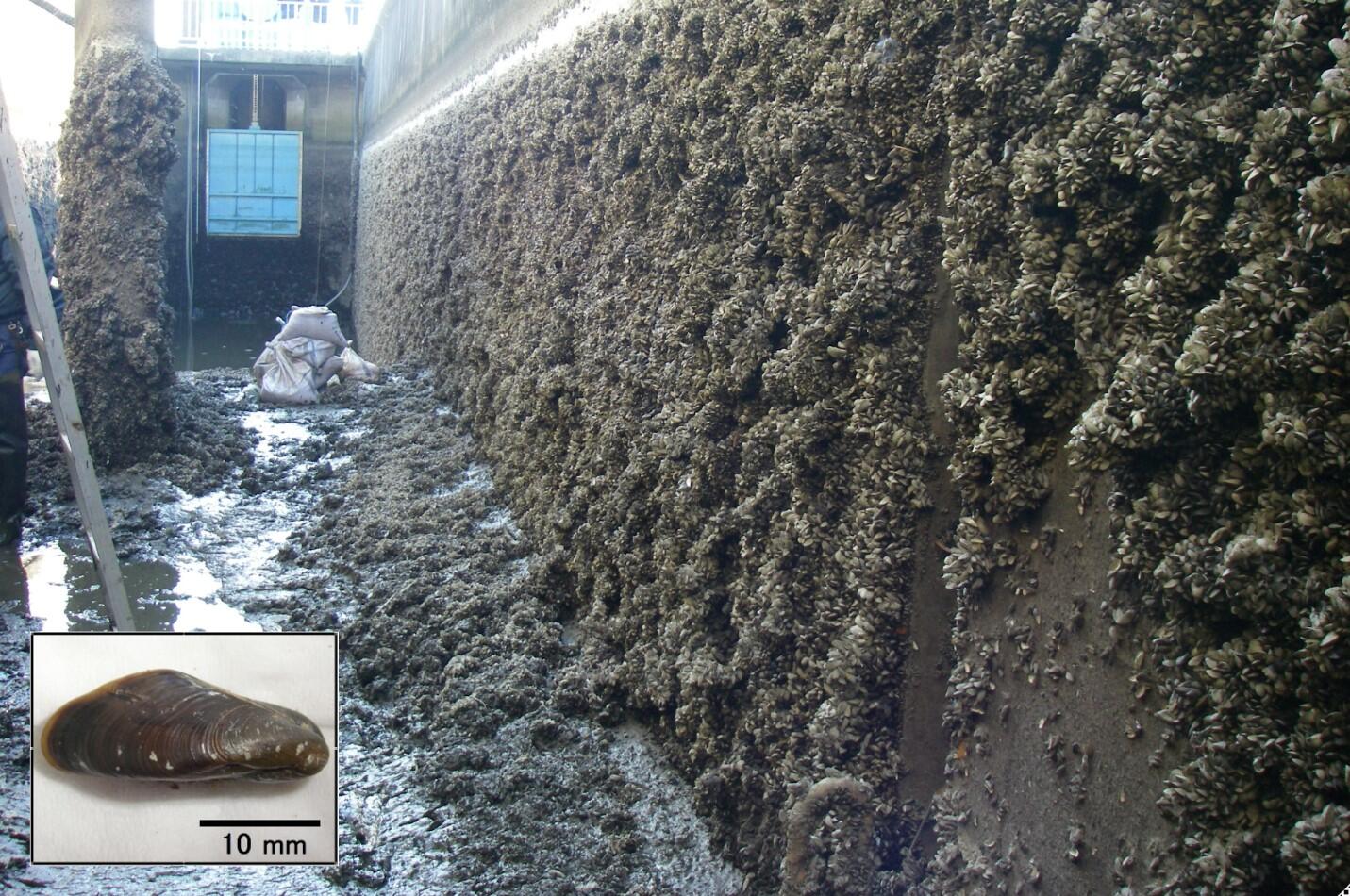On August 18, a research group comprising Kenji Ito, Senior Researcher, and Hiroyuki Shibaike, Institute Director, both belonging to the Institute for Agro-Environmental Sciences, National Agriculture and Food Research Organization (NARO), Biodiversity Division, announced the development of a highly sensitive detection method for the invasive species Limnoperna fortunei (golden mussel) using environmental DNA. The group developed a new primer specific to the golden mussel that allows for DNA amplification. They confirmed that their newly developed method can more accurately and sensitively detect the presence of the golden mussel in reservoirs or other bodies of water by collecting and analyzing the environmental DNA held in volumes of water as little as 1 liter. Results obtained using this method are expected to be used as a confirmation tool for detailed investigation and decontamination work. The group's results were published in the international scientific journal Plankton and Benthos Research.
The golden mussel is a freshwater bivalve belonging to the Mussel family native to the Korean Peninsula and China; it is designated as an invasive species in Japan. It is distributed from Asia to South America and in Japan, it can be found in the Kinki and Kanto regions. Outbreaks of the organism in water channels and reservoirs have resulted in clogging of channels and water pipes and have caused significant changes in native ecosystems. Its breeding season continues from June to October and 10-20 days after birth, 0.1 mm long floating larvae, which drift in water, are dispersed along with the flow of water across the country. Following this, they metamorphosize and affix themselves to a surface to prevent further movement and then reside in the same location for the rest of their lives. Paddy fields, where these shellfish spend their planktonic larval stage, utilize large amounts of water which allows these organisms to migrate widely from the reservoirs.
To prevent their spread and control the related damaging effects, it is necessary to detect the invasion at an early stage and implement control measures while they are at a low population density. However, it is difficult to detect the organism at low densities using the traditional methods of visual observation and larval survey using plankton nets. To tackle this issue, the research group applied a new method for detecting environmental DNA and developed a new detection technology for the golden mussel. The effectiveness of this was verified by comparing the new method with the conventional method.
First, primers were designed that specifically amplified only the DNA of the golden mussel. The developed primer pair amplifies only the mitochondrial DNA of the golden mussel because this DNA allows for higher species discrimination than nuclear DNA and is easily amplified. The primers do not amplify the DNA of other bivalves, including related species. Specifically, DNA was extracted from Pacific oysters, green mussels, mussels, Xenostrobus securis, and the Asian clam, all of which are often found to share the same habitat, and it was confirmed that DNA from these species were not amplified. To verify the effectiveness in field investigations, a newly developed environmental DNA survey was carried out in 15 reservoirs originating from a source colonized by golden mussel in combination with the conventional techniques of visual observation and larval survey.
As a result of this investigation the golden mussel was detected at two sites through visual observation whereas it was detected at three different sites through larval examination. During the environmental DNA survey, water sampling was performed only once at each site, but four sites were newly detected in addition to the five sites detected by the two conventional techniques (nine sites in total). The newly developed procedure for environmental DNA investigation involves collection of 1 liter of surface water, DNA extraction and purification (using a kit), followed by PCR analysis after filtration. The time required for field investigation is short, and it can be easily conducted without impeding the operation of reservoirs.
Although the accuracy is likely to be improved through collecting water from multiple sites, appropriate testing methods, including the number of samplings, are currently under consideration. Unlike conventional detection techniques, the new method does not detect the golden mussel itself, and as a result, a positive result is obtained even in situations where an influx of water containing DNA from the golden mussel occurs without the organism present. Despite this, a positive result at least indicates that the mussel is breeding nearby. The method is likely to enable detection even at low density conditions characteristic of the early phase of invasion. The levels of DNA detected also seem to partially reflect the density. Based on the environmental DNA survey results, it is expected that control and countermeasures can be initiated at an earlier stage than with currently available tools. This should mean that more extensive and comprehensive surveys are possible.
Senior Researcher Ito stated, "We have already started a distribution survey in collaboration with local land improvement departments, and we plan to report our results as soon as the results are available. In the future, we believe that we can contribute to solving the problem of alien species in waterways using environmental DNA by applying this method, and we further believe that this need not be restricted to the golden mussel."

Credit: NARO
This article has been translated by JST with permission from The Science News Ltd.(https://sci-news.co.jp/). Unauthorized reproduction of the article and photographs is prohibited.




